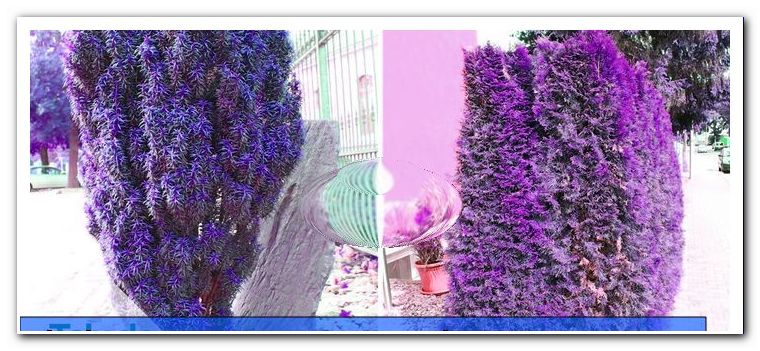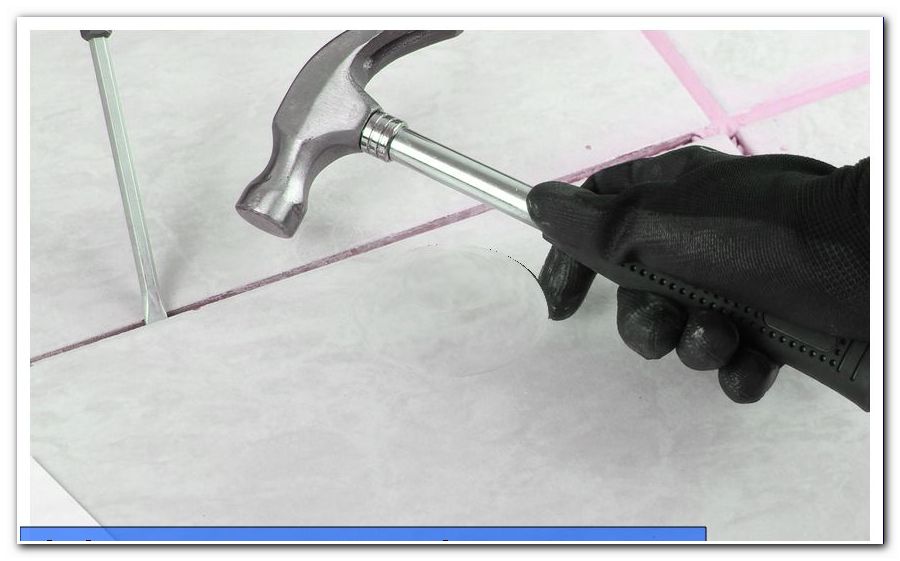Knit bolero itself - free knitting instructions

- Material and preparation
- Bolero knit in one piece
- 1st sleeve
- opening
- 2nd sleeve
Even knitting a top yourself is the dream of many knitting beginners. A pair of socks are not a problem, but a sweater is quite a challenge - and a lot of work! All knitters who want to have a sense of achievement quickly, therefore, the bolero recommended. It is a practical top that knits relatively quickly and in one piece. In this free tutorial we show you how to knit a bolero - beginners will love it!
With a jacket or a sweater you have to use the knitting instructions almost as a mathematical concept: how long must the sleeves be "> material and preparation
Prior knowledge:
- right stitches
- left stitches
- Increase mesh
- Remove stitches
Material for a bolero:
- approx. 200 g of wool (50 g / 135 m) for needle size 4.5
- Circular needle 4.5 mm, at least 50 cm
OR 4.5mm Needles and 4.5mm Needle Needles - wool needle

The choice of knitting needles is a matter of taste. Of course it makes sense to use the needles that you already have at home. The practical thing about the circular needles is that they can be used for both the sleeves and the back. The advantage of needles and knitting needles is, in turn, that you can fully spread the knit. This especially makes it easier to try on in between to find the perfect back width.
Please note the following information about the size of the boleros in this knitting pattern:
A 10 x 10 cm mesh sample resulted in 26 stitches on 30 rows. Our bolero is about the size M. The back width is 40 cm and the circumference of the upper arm at 36 cm. The sleeves themselves are 18 cm long. Overall, this bolero sits quite loose.
For an ideal fit, it is best to measure yourself and make your own stitch test. Since no pattern is knit, fitting it to another size is easy. In addition, one and the same bolero fits for a fairly large span of sizes. The only really important criterion is that the back is wide enough to slip into the sleeves.
Bolero knit in one piece
1st sleeve
So we start at the cuff of one sleeve and work our way over the back to the cuff of the other sleeve. For the cuff, hit 96 stitches. For the rib pattern of 2 left, 2 right, a mesh divisible by 4 makes sense. On the Needle Game or the Circular Needles, at the beginning, knit 6 rounds in this rib pattern.

Now we have to calculate briefly: Our sleeve should be a total of 18 cm long. We already knitted 2 cm as a cuff. It remains 16 cm, which corresponds to 48 rounds. Our goal is to arrive at the end of the sleeve with a circumference of about 48 cm. This corresponds to a nice height for the back part of the boleros. From the beginning 36 cm to 48 cm arm circumference 12 cm missing. So we have to increase a total of 32 meshes. Since there are always 2 stitches in an increase round, we get to 16 increase rounds. If we distribute the 16 incremental round evenly over the remaining 48 rounds of the sleeve, we must increase in every third round.
Tip: Keep a list of how many rounds / rows you have already knitted. If you let the knitting work rest briefly, you quickly forgot where you are. A marker at the end of the round serves as a reminder to make a dash.
Now knit alternately 2 turns to the right over all the stitches on your needles and an increase round. In the gaining round all stitches are also knitted on the right side. Only in the 2nd and in the penultimate stitch of the round do you knit a right and a left stitch. For this you knit as usual a right stitch, but still leave the stitch on the left needle. Continue to knit a left stitch in the same stitch, then let it slide off the left needle.

Note: When playing a needle, periodically push a few stitches on the 2nd and 3rd needle to maintain an even distribution.
opening
After the last round of increase knit one more round. There should now be 128 stitches on your knitting needles. If you are using a double-needle game, switch to the needlepoint or needlepoint after this round. From now on knit in rows. The round is almost opened between the 1st and 4th needle. To continue to knit smooth right, the back rows must of course be knitted on the left.

Stamina is needed now. For the model in our knitting pattern with 40 cm spine width you knit a total of 120 rows of 128 stitches. (That's a total of 15, 360 stitches). Since you knit the bolero in one piece, you can always try from about 90 rows, if the back width is sufficient. Slip it in the sleeve and test whether you can contract the back part under the other arm to a lap. If this is possible without much effort, you can start with the 2nd sleeve.
2nd sleeve
At the 2nd sleeve, you are exactly mirrored to the 1st sleeve. So you have to take 2 stitches in every third round. For the sleeve put the stitches in the last row back on the needle play. Close the stitches at the end of the row for a round.

Immediately in the next round, the first decreases take place. For this, knit the 2nd and 3rd stitch of the round on the right. The third and penultimate stitch of the round you lift first one after the other right. Then slide it back onto the left needle and knit it to the right as well. This is repeated every third round, 16 times in total.

Note: You can use this knitting pattern to knit just as well ¾-length sleeves or long sleeves. Use the circumference of the forearm as the starting point for the cuff. Again, the increase rounds are evenly distributed over the length of the arm.
Last knit a round without declines. Then go back to the cuff pattern with 2 left and 2 right stitches alternately. Work the cuff as in the first sleeve over a total of 6 rounds. Unlock the stitches. Cut the thread and sew the protruding piece. Your bolero is ready!

The beauty of this bolero is that you do not need to sew anything at all. He knits in one piece according to knitting instructions and after the last stitch is ready to be dressed, so to speak. Depending on the yarn and festivals of your stitches, we still recommend a very small stitch with the wool needle.

It can namely act when wearing a fairly strong train on the last stitches of the sleeves, where the bolero opens to the back. Reinforce this point with a rest of thread from your knitting wool. This guarantees you long pleasure in your new, self-made bolero!
And "> 




